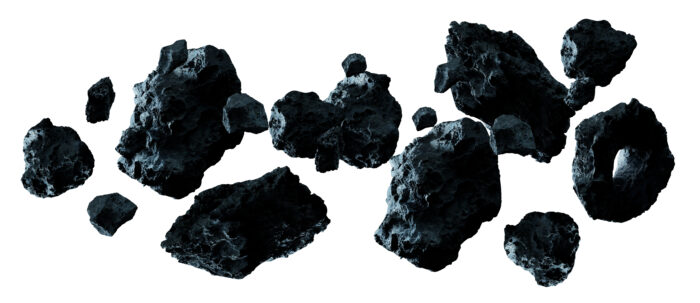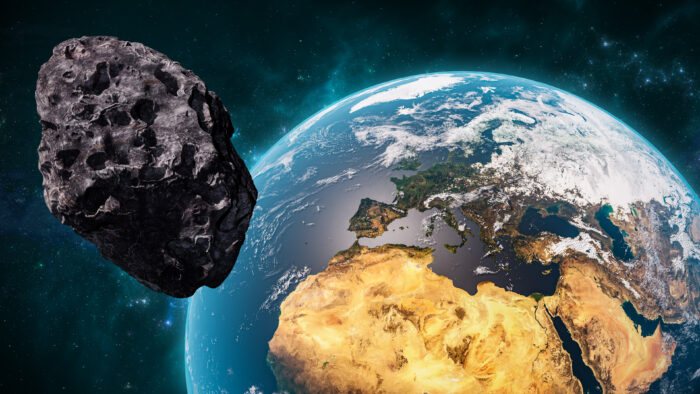
Amino acids are the building blocks of life. These molecules combine to form proteins that are essential to living creatures, and how life started on this very planet. For years scientists have been trying to understand how these key building blocks of life came about on Earth and a recent mission by a Japanese research team might finally have some answers for us! This marks the first time these important organic compounds have been found in an asteroid still in space.
A Japanese venture called The Hyabusa2 mission has brought back samples of dust and sand from an NEO or Near-Earth Object and an asteroid of the Apollo group in our solar system. The asteroid is named ‘Ryugu’. Although these amino acids have been found in materials from the asteroids that fell on Earth, these samples are extremely unique and one of a kind. This is because for the first time scientists on Earth have access to material that hasn’t been contaminated by the process of an asteroid entering the Earth’s atmosphere.
All samples before this from asteroids have been from ones that had fallen on Earth. Although these samples were looked at, they have not been helpful in understanding the amino acids as most relevant data gets lost during entry through Earth’s atmosphere which burns and creates a superheated form of matter called plasma.

To resolve this, the Hayabusa2 team landed on Ryugu in June 2018 to make measurements and take samples for analysis. It then left the asteroid for Earth in November 2019 to return with the sample capsule to Earth on 5 December 2020. Now, these samples are being analyzed to help scientists trace back the origin of these compounds on Earth. Understanding this can help unravel the mystery of how these key ingredients of life found their start on Earth and how life itself first emerged on Earth.
On top of this, the discovery of these 20 key amino acids confirms another theory many scientists have had, that the presence of life outside Earth is indeed a possibility! Asteroids, which orbit the sun but are much smaller than planets, are some of the oldest objects in our solar system. They have the potential to help us explain how Earth formed and evolved, and now how life itself on Earth may have evolved. The Japan Aerospace Exploration Agency (JAXA), had high hopes of finding clues to how the materials are distributed in the solar system and are related to life on Earth. The Hayabusa2 mission was launched with the specific purpose of finding answers to these fundamental questions.
The spacecraft was able to obtain not just surface material, but also subsurface material. The mission itself was an exciting adventure! Once the Hayabusa2 arrived on Ryugu, it first shot an impactor at the asteroid, creating a crater. Then scooped up the debris dislodged by the collision to ensure it was getting samples that would pack the most information.
Three years ago today (February 22, 2019) was the first touchdown of Hayabusa2! We remember the extremely tense operation. The sample collected at that time is now being examined by our initial analysis team. We are excited about what we will find! pic.twitter.com/tvmyBnHOzk
— HAYABUSA2@JAXA (@haya2e_jaxa) February 22, 2022
The mission team was able to bring back a capsule with 5.4 grams of surface material which has since been under analysis by JAXA along with other research institutions across the nation. “The Ryugu material is the most primitive material in the solar system we have ever studied,” Hisayoshi Yurimoto, a geoscience professor at Hokkaido University who led the initial chemical analysis of the Hayabusa2 mission, said at a recent conference.
Next up, NASA’s OSIRIS-REx mission is expected to return with a much larger batch of asteroid rock, planning to bring back about 60 grams of samples from the asteroid Bennu in 2023, which is also part of the Apollo group.

Researchers have had many theories about the beginning of life on the planet. One of the key theories says it was meteorites and asteroids that brought life to the planet while another one claims it was attached to our planet’s ground. The presence of these building blocks of life in these remnants since the very creation of the solar system can reveal a lot to us, including which of these might be the case.
As scientists gain more and more access to such comprehensive samples of these rocks from the time of the solar system’s beginning, we are further on our way to discovering more about the planet, and the solar system’s past!
This is not the end of the mission for the probe that brought us back this key sample. After dropping the capsule, the craft has already returned to space and is heading to its next assignment: another distant and small asteroid called 1998KY26 on a journey slated to take 10 years. Let’s wish it all the best on its next adventure as we wait patiently for it to make its return!
What do you think about these amazing space missions? Let us know in the comments!
Learn more about space and our connection to it with these articles.
What Would Happen if The Sun Turned into a Black Hole Right Now?
Adrija is a writer, dancer, and artist, who loves to learn (about everything). She has grown up in many places and still carries a big love for all things travel and culture. Adrija loves fantasy, science-fiction and anything that transports her to magical worlds. Her favourite books include Harry Potter and The Hitchhiker’s Guide to the Galaxy. She’s always on the lookout for cute animals to pet, places to explore, and good humans to share stories, laughter, and joy with.